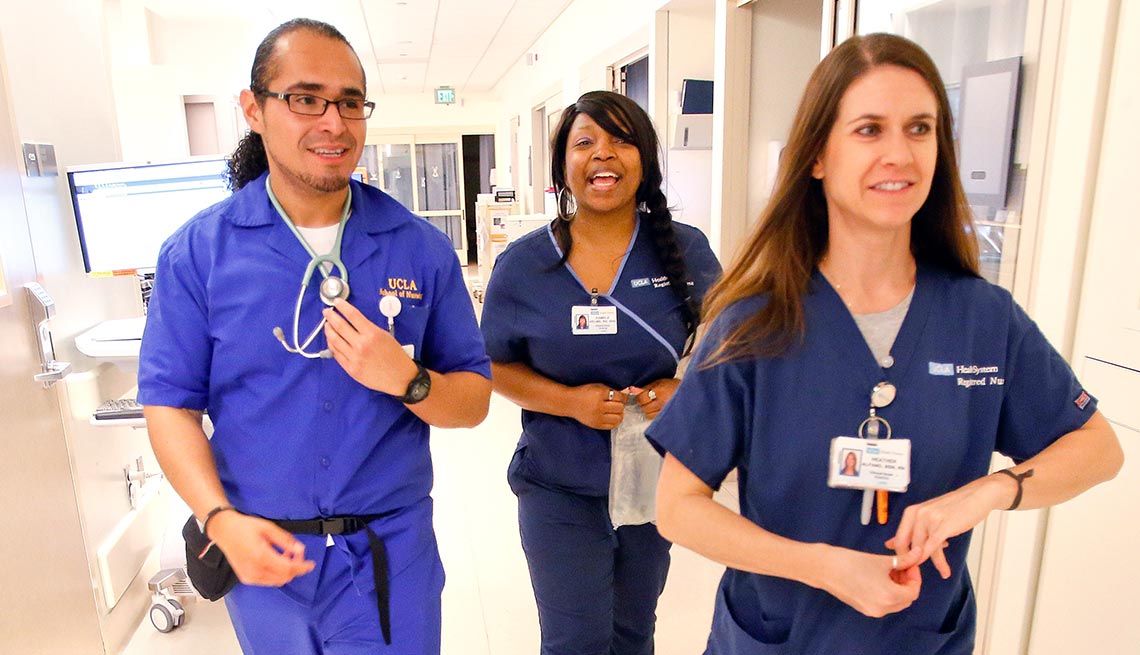AARP Hearing Center
Jo Ann Jenkins,
If you’ve had a stellar experience with the health care system, chances are it involved a nurse. We celebrate National Nurses Week (May 6 – May 12) as a time to recognize nurses for their incredible and invaluable service in providing care, but also to bring attention to their expanding role in delivering health care and the need to expand the pipeline for bringing more nurses into the system.
Nurses are the largest portion of the health care workforce. They are its front lines and its backbone. They are consistently ranked among the most trusted professionals, with honesty and ethical standards rated even higher than those of the clergy, doctors and police officers in Gallup’s annual poll.
Nurses spend more time with patients than any other health care provider, and they have unique insights about the interplay among the factors that affect patient care. They bring an important voice and point of view to management and policy discussions. They are in a perfect position to empower families to perform the caretaker’s role, and they are strong patient advocates.
Nurses have huge contributions to make in improving health care quality, safety, access and value. But, too often, they are not given the chance. What’s to blame? Old habits. Old prejudices. Blocked pathways. All are huge barriers.
Historically, nurses have been left out of most policy debates, and few have had places at the table when the big decisions about health care reform are made. In many states nurses are prevented from practicing to the full extent of their education and training. They are scarce on hospital boards.
And their supply is dwindling. The U.S. Bureau of Labor Statistics estimates that by 2018 the country will need nurses to fill 581,500 new positions and will have to replace hundreds of thousands in positions that will open as experienced nurses leave the profession.
In the best interest of improving the health care system, we need to change all of this — especially with the size of the 65+ population expected to double in the coming years.
Five years ago, the Institute of Medicine issued a report calling for more nurse leaders to play an expanded role to improve health care in the United States. Today, the Future of Nursing: Campaign for Action, an initiative of AARP Foundation, AARP and Robert Wood Johnson Foundation, is putting sustained emphasis on the report’s recommendations.
We’re going to need every nurse we can find, among legions of new, richly skilled, well-educated nurses to provide the primary and preventive care, chronic care management and care coordination that are going to be the core of a smooth-functioning, cost-effective, equitable health care system.
AARP has been a long-time advocate for expanding the role of nurses to be allowed to contribute to the full extent of their capabilities. We want to help ensure that everyone in America has access to a highly skilled nurse, when and where they need one.
So, this National Nurses Week, all of us at AARP celebrate their skill, respect their experience and continue our work to enhance their presence in the world of medicine.
Jo Ann Jenkins is CEO of AARP.
































































